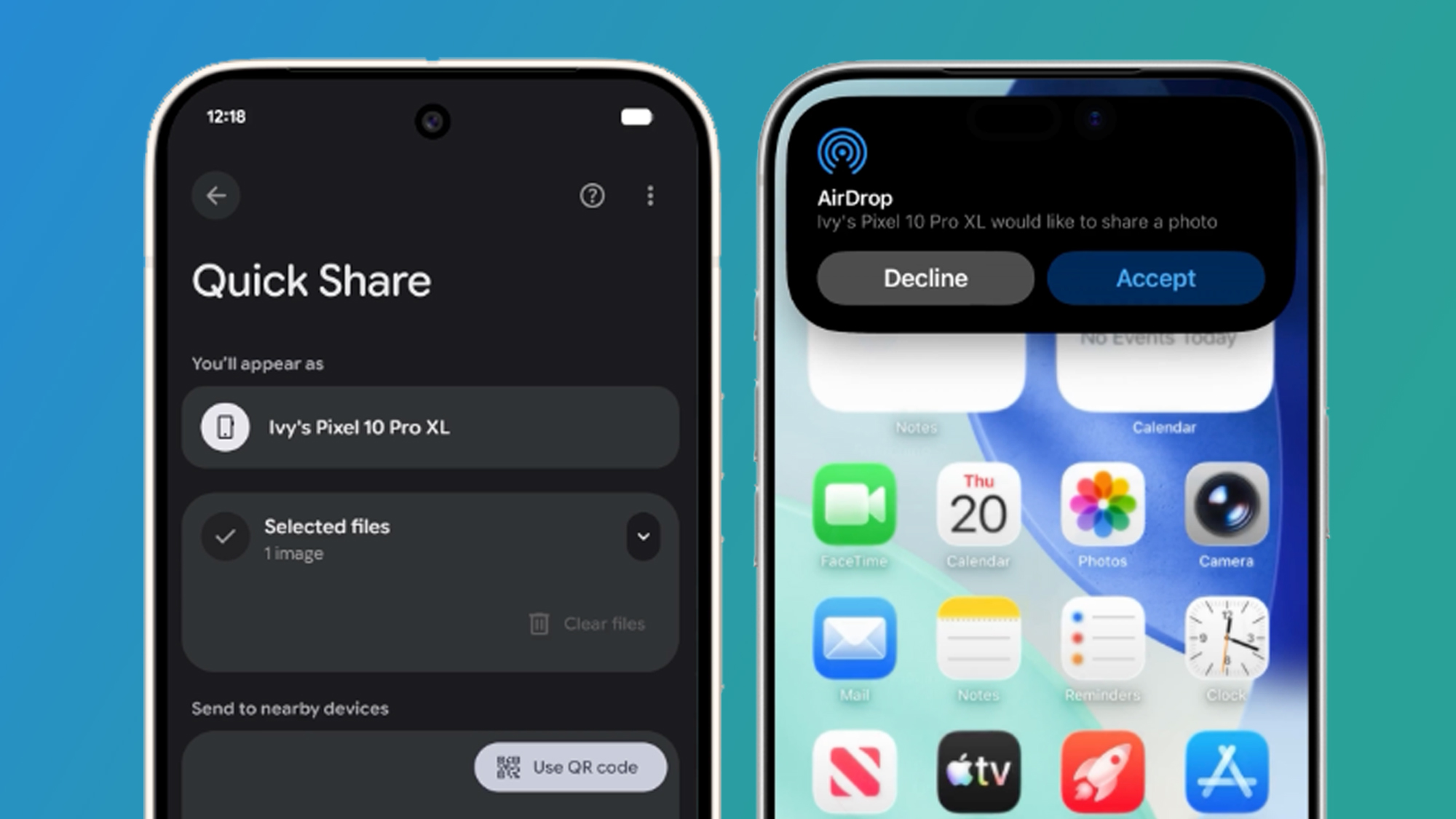- In a surprise move, Google’s Quick Share now works with AirDrop
- Apple apparently left in the dark and could try to close it
- However, there are reasons to believe that Apple could keep the feature.
In a surprise announcement yesterday, Google revealed that it had made its Quick Share feature compatible with Apple’s AirDrop when using a Pixel 10 device. In other words, you can now seamlessly share files between select Android and iOS devices quickly and securely.
However, reading Google’s press release, something interesting emerged: Apple apparently had no part in this announcement, and the company may not have even realized it was coming.
After all, a second Google blog post said the company would “welcome the opportunity to work with Apple” to enable more comprehensive Quick Share and AirDrop collaboration in the future, implying that Apple wasn’t part of the engineering effort to get it working in the first place. This raises a key question: Will Apple drop the Sword of Damocles and try to shut down the new feature?
That kind of action by Apple would be unprecedented. In 2023, messaging app Beeper reverse engineered Apple’s iMessage platform to allow blue bubble text messages to work between iPhones and Android devices. Apple didn’t take kindly to that kind of hacky engineering and forced Beeper to abandon the feature.
Even if Apple doesn’t actively force Google to reverse its announcement, it’s unlikely that Tim Cook and company will be happy about being caught off guard in this way (assuming there were no behind-the-scenes discussions).
Apple loves to control the narrative and fiercely protects its proprietary technologies. Tearing down the company’s walled garden, taking AirDrop to places it was never intended to go, and announcing it to the world without Apple’s input feels like anathema to the Apple we know so well. So what happens next?
Could it be different this time?

All that said, there are three key reasons to believe that Apple could actually hold the fire and allow Google’s new project to continue, even if Apple doesn’t actively work to improve the feature in the future.
On the one hand, there is the European Union (EU). Apple has been under relentless EU scrutiny for years for its ecosystem and allegedly anti-competitive practices, with much of the attention falling on features that are exclusive to Apple devices.
The EU wants Apple to make some of these technologies available to its competitors for free, so allowing Quick Share to work with AirDrop could be a way for Apple to reduce the EU heat. This resulted in the appearance of a new API called Wi-Fi Aware in iOS 26, which allows third-party apps to discover and connect to nearby devices over Wi-Fi; in other words, alternatives to AirDrop.
Second, Google and Apple have been working together much more closely of late, sometimes more enthusiastically than others. The two collaborated to enable the RCS messaging standard to come to iOS, for example, while there are strong rumors that the next AI-powered version of Siri will leverage Google Gemini to do some of the heavy lifting.
Finally, there is also the question of whether Apple is capable of blocking Google’s AirDrop movement on a technical level. Several journalists, including The Verge’s Tom Warren, have speculated that AirDrop has no way to validate devices unless a user is in Contacts Only mode, which Google’s implementation avoids by sticking to AirDrop’s Everyone mode for 10 minutes.
If that’s correct, it would explain why several third-party Android AirDrop hacks have been around for some time and potentially leave Apple unable to stop Google’s move other than through diplomacy.
But considering that such a move could result in the EU breathing down its neck, Apple will probably be reluctant to go down that route. That could mean that both Android and Apple fans could use this new feature for the foreseeable future. However, nothing is guaranteed (perhaps an Apple engineer can fix it by altering how AirDrop works), so keep your eyes peeled for updates.
Follow TechRadar on Google News and add us as a preferred source to receive news, reviews and opinions from our experts in your feeds. Be sure to click the Follow button!
And of course you can also follow TechRadar on TikTok for news, reviews, unboxings in video form and receive regular updates from us on WhatsApp also.



